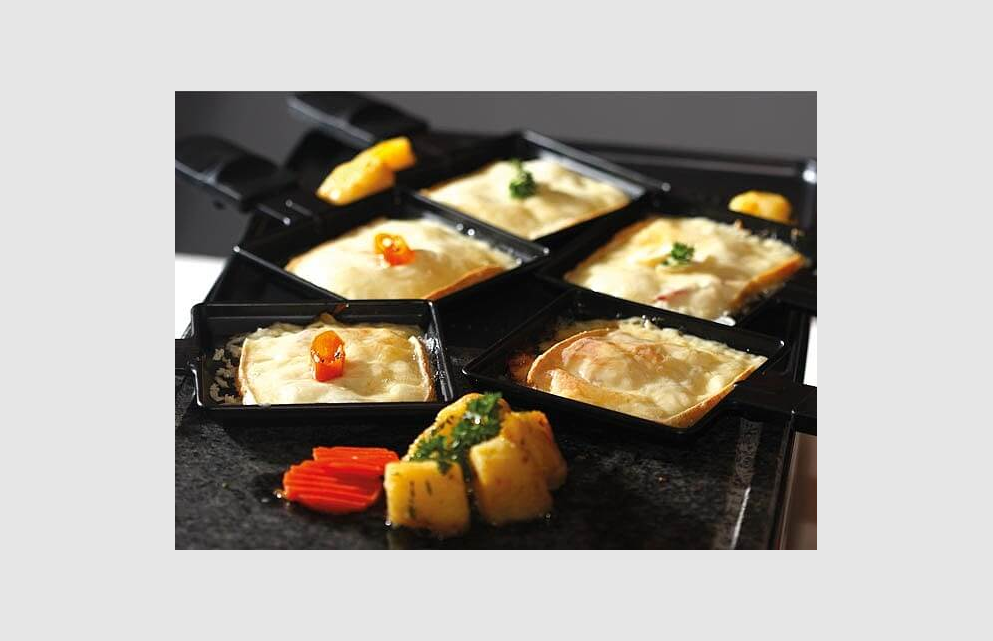
The history of raclette
Raclette is a dish that originated in Switzerland. The eponymous cheese from which it takes its name originated in the Valais mountains in the Middle Ages. Although the first written references to the cheese date back to the 16th century, it wasn't until 1874 that the term Raclette was coined. Originally, the cheese, a wheel cut in half, was placed in front of the hearth to melt, the flow of cheese bearing the name of religieuse. The cheese was accompanied by potatoes cooked in the ashes. It wasn't until 1921, with the development of electricity, that the electric ramp appeared.
With or without charcuterie?
There's another difference: in Switzerland, you don't eat cold meats with raclette! Instead, the Swiss add tomatoes, onion slices, vinegar condiments (gherkins, onions or mushrooms) and a dash of pepper, according to taste. Raclette has long since crossed borders, with production in several French regions (Savoie, Auvergne, Brittany, Franche-Comté) as well as in Canada (Quebec). Raclette is a pressed, uncooked cheese made from raw or pasteurized cow's milk. Raclette can be round or square in shape, and its wheel weighs between 4kg and 8kg.
White or red wine?
This French-style dish combines charcuterie, creamy, melting cheese and potatoes. You'll need to take all the ingredients into account when choosing your wine. Cheese often brings out the dryness of the tannins and masks the qualities of many red wines. Nevertheless, it is possible for wine lovers to find red wines to pair with this dish. You'll need to look for wines that emphasize straightforward fruit, easy, fresh reds.
On the other hand, the acidity and tension of a more incisive white wine can overcome the fat and creaminess of the cheese, while adding a little freshness and crunch. As is often the case, we advise you to think local, first and foremost. For whites, you can choose between a light Chasselas from the Vaudois or Valais, a lively Petite Arvine from the Valais, and for reds, a lightly tannic Pinot Noir or a Dôle, a blend of Gamay and Pinot. If you want to stick to French production, turn to Savoy with a Roussette (Altesse grape variety) or a Chignin Bergeron (Roussane grape variety), and to the Jura for reds with Poulsard, Trousseau or Pinot noir.
Avoid:
- Red wines that are too tannic, acidic or sun-drenched
- White wines that are too acidic, off-dry or sweet
Now you're ready for a raclette party!





